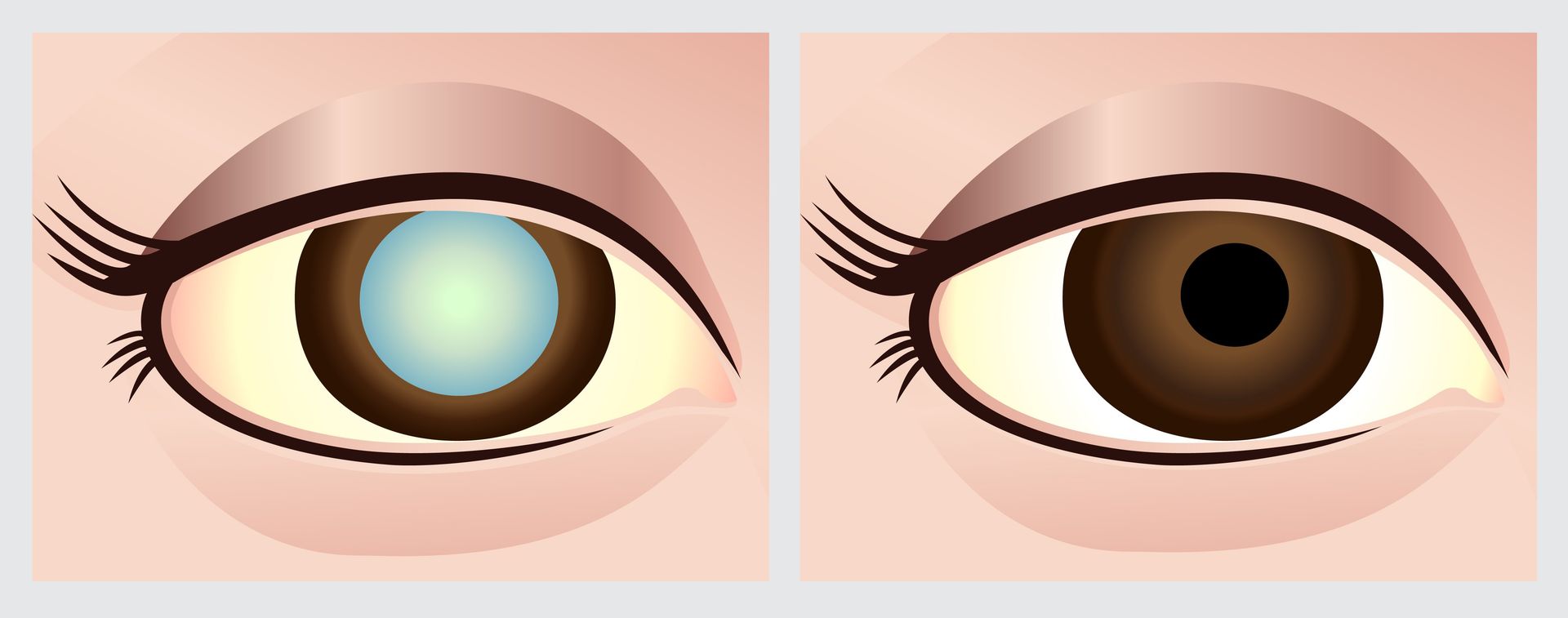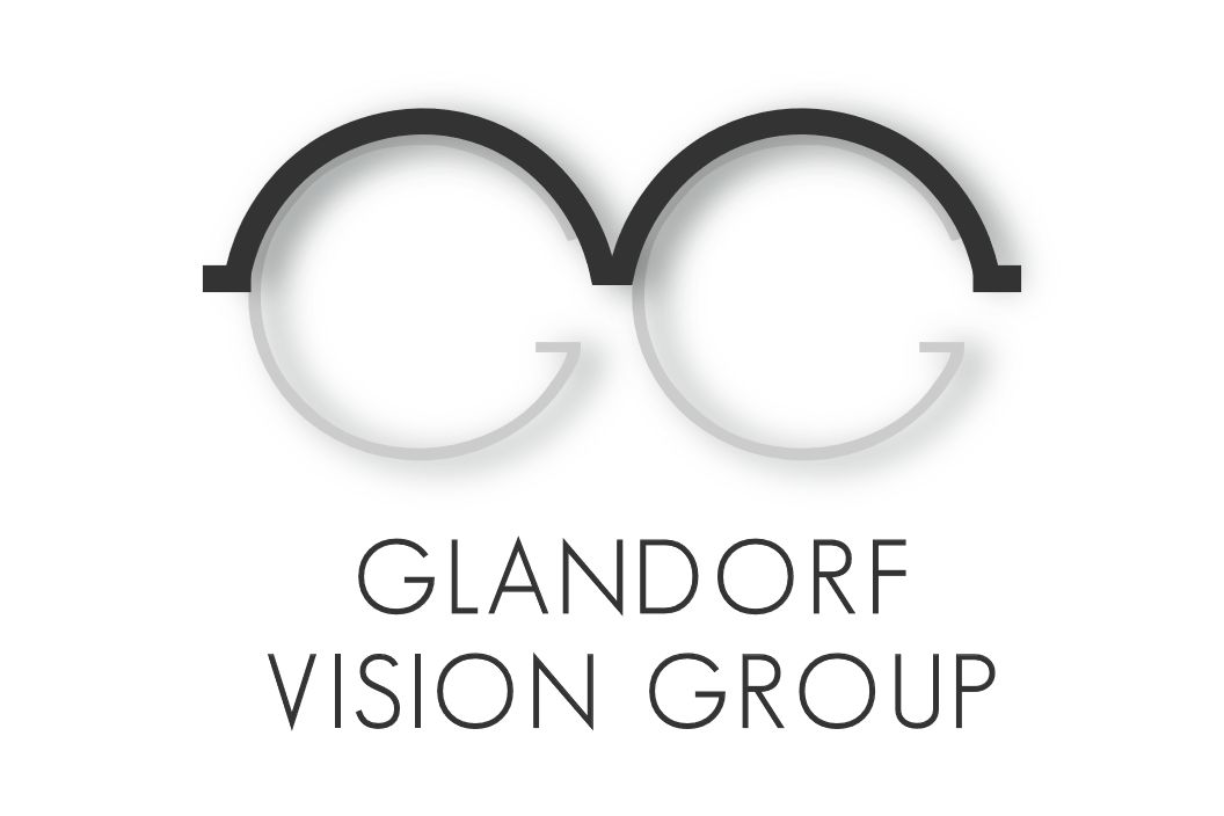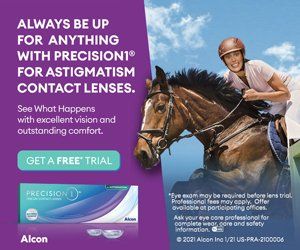A Few Facts About Cataracts

Cataracts are the most common cause of decreased vision in people over age 40. According to Prevent Blindness America (PBA), there are more cases of cataracts worldwide than there are of glaucoma, macular degeneration and diabetic retinopathy combined.
Today, cataracts affect more than 22 million Americans age 40 and older. As a person ages, their risk for developing cataracts will also increase. On rare occasions, cataracts can also form in children and even newborn babies.
Fortunately, cataract surgery is very successful in restoring a person’s vision. In fact, cataract surgery is the most common surgery performed in the United States, with more than 3 million Americans undergoing this surgery each year.
It’s beneficial to gain a basic understanding of what a cataract is, how to limit the risk of developing a cataract and what can be done if one does form.
What is a Cataract?
A cataract is an eye condition where the normally clear lens inside of the eye becomes cloudy. The lens of the eye works like a camera lens, allowing light to pass through and focusing this light onto the retina to provide clear vision. As we age, proteins that make up the inside of this lens start to clump together, creating a cloudy spot in the lens. Over time, this spot can become large and can cause blurred vision, as well as other symptoms. These may include lights seeming too bright, increased glare from vehicle headlights or street lights, or colors may not appear as bright as they once were.
There are different layers in the lens in which a cataract can form, and the speed at which they form depends on their location. Typically, age-related cataracts are slow to form and may take years before a person is ready to have cataract surgery. Others may form quickly and cataract surgery may need to be done much sooner to restore vision.
Preventing Cataracts
There are many steps you can take to limit the risk or delay the formation of a cataract. Staying healthy, avoiding certain lifestyle habits and having regularly scheduled eye exams are at the top of the list.
Research shows eating healthy and nutritious foods has a significant impact on your chances of developing a cataract. Studies published in the American Journal of Clinical Nutrition state a diet high in fruits and vegetables aids in the prevention of cataract development due to the high antioxidant content of these foods.
Healthy diets and lifestyles also reduce the risk of developing health conditions which increase the chances of a cataract forming. Diabetes is one of the most notable health issues where the risk of early cataract development is increased. High blood pressure, obesity, hormone replacement therapy, some high cholesterol medications, and high doses of steroid medications are also on the list of cataract development risk factors.
Smoking and the over consumption of alcohol may also increase the chances of earlier cataracts. Studies show people who smoke a pack of cigarettes per day may double their risk of developing a cataract.
Ultraviolet radiation exposure from the sun can cause a process called oxidative stress, or harmful chemical reactions, to occur within the cells of the lens, and can lead to cataract formation. Therefore, proper sunglasses that block 100% of the sun’s UV rays should be worn outside by people of all ages, including children, to protect the eyes. A hat or visor can help too.
Regular eye exams performed by an experienced eye care professional are also critical to limiting the impact on clear vision if a cataract does begin to form.
What to Do If a Cataract Develops
Cataracts won’t just go away. Some cataracts do stop progressing while others continue to grow and progress to the point where they will cause blindness if left untreated.
Cataract surgery is currently the only remedy for removing a cataract. However, the need for surgery is usually not immediate. Cataracts may be properly managed with the use of corrective lenses and it may take many years before surgery is necessary. Only when vision is seriously impaired and is affecting a person’s daily activities will cataract surgery be recommended.
When considering surgery, these are the questions you should ask yourself:
• Can I see to perform my job and drive safely?
• Do I have problems reading or watching television?
• Do vision problems affect my level of independence?
Your optometrist can also assist you in making this decision, he or she is most familiar with your current and past eye health and vision history, and can answer specific questions you may have.
Cataract surgery is a relatively painless and quick surgery in which an ophthalmologist will remove the old, cloudy lens and replace it with a clear, artificial, plastic lens. Sometimes this implant can be selected to contain a person’s prescription, which may reduce their dependency on glasses following surgery. Once the eyes have healed, an eye care professional can evaluate the continued need for glasses or contact lenses. Most people do need to wear glasses after surgery, sometimes only for a few activities.
If a cataract does develop, it is important to seek and follow the care and guidance of a qualified eye doctor. They can help determine if or when cataract surgery is appropriate for you.





